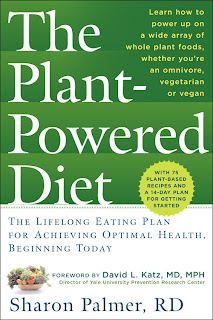Prime Books
Published October 3, 2012
288 pages
Buy here.
If you are a bibliophile who can't get enough of bookstores, this is the book for you. It's a collection of short stories by various authors that use bookstores as their primary setting (and sometimes as secondary characters!). As the title indicates, all the stories are on varying points of the fantastic scale, and every story utilizes a bit of magic to tell its respective tale. Since the target audience for this collection seems to be those who see even an ordinary bookstore as a place of magic, this only seems appropriate. While the stories are all connected by their use of fantastic elements, the stories also employ quite a bit of contemporary realism (though there is at least one futuristic story, as well as a couple that are given historical contexts). Yes, the bookstores are magical, but this magical quality is enhanced by their placement in modern society. The stories are not set in an entire world of make-believe, and the bookstores in the stories serve for the characters a reprieve from, cause for, or solution to their problems.
A few stories stuck out to me on a first read as particularly enjoyable. "A Book, by Its Cover" by P.D. Cacek, sees a bookstore owner in Nazi German using his shop as a means for others to escape, though not in any way that may be expected. "The Hemingway Kittens" by A. R. Morlan explores the possibilities of scientific advancement in the form of two bookstore cats. "Pixel Pixies" by Charles de Lint is a tale about a bookstore owner who is troubled by pixies that escape from her computer and a hob who tries to help her. "Escapes" by Nina Kiriki Hoffman is a rather disturbing story about a woman who begins working in a bookstore after she moves to escape her sadistic ex-boyfriend, while "'I Am Looking for a Book...'" by Patrick Weekes is a hilarious jab at large-chain bookstores, relaying the frustrating experiences of Gorhok, a demon trying to find a book he needs to bring on the end of days that very night.
While the stories above are my particular favorites at this time, I definitely enjoyed all of the stories to varying degrees; I can't say there are any in this collection that I dislike. If you are as enchanted as I by just the everyday regular bookstore, you will certainly find something to love in this collection.
Rating: 4/5
Published October 3, 2012
288 pages
Buy here.
If you are a bibliophile who can't get enough of bookstores, this is the book for you. It's a collection of short stories by various authors that use bookstores as their primary setting (and sometimes as secondary characters!). As the title indicates, all the stories are on varying points of the fantastic scale, and every story utilizes a bit of magic to tell its respective tale. Since the target audience for this collection seems to be those who see even an ordinary bookstore as a place of magic, this only seems appropriate. While the stories are all connected by their use of fantastic elements, the stories also employ quite a bit of contemporary realism (though there is at least one futuristic story, as well as a couple that are given historical contexts). Yes, the bookstores are magical, but this magical quality is enhanced by their placement in modern society. The stories are not set in an entire world of make-believe, and the bookstores in the stories serve for the characters a reprieve from, cause for, or solution to their problems.
A few stories stuck out to me on a first read as particularly enjoyable. "A Book, by Its Cover" by P.D. Cacek, sees a bookstore owner in Nazi German using his shop as a means for others to escape, though not in any way that may be expected. "The Hemingway Kittens" by A. R. Morlan explores the possibilities of scientific advancement in the form of two bookstore cats. "Pixel Pixies" by Charles de Lint is a tale about a bookstore owner who is troubled by pixies that escape from her computer and a hob who tries to help her. "Escapes" by Nina Kiriki Hoffman is a rather disturbing story about a woman who begins working in a bookstore after she moves to escape her sadistic ex-boyfriend, while "'I Am Looking for a Book...'" by Patrick Weekes is a hilarious jab at large-chain bookstores, relaying the frustrating experiences of Gorhok, a demon trying to find a book he needs to bring on the end of days that very night.
While the stories above are my particular favorites at this time, I definitely enjoyed all of the stories to varying degrees; I can't say there are any in this collection that I dislike. If you are as enchanted as I by just the everyday regular bookstore, you will certainly find something to love in this collection.
Rating: 4/5

























